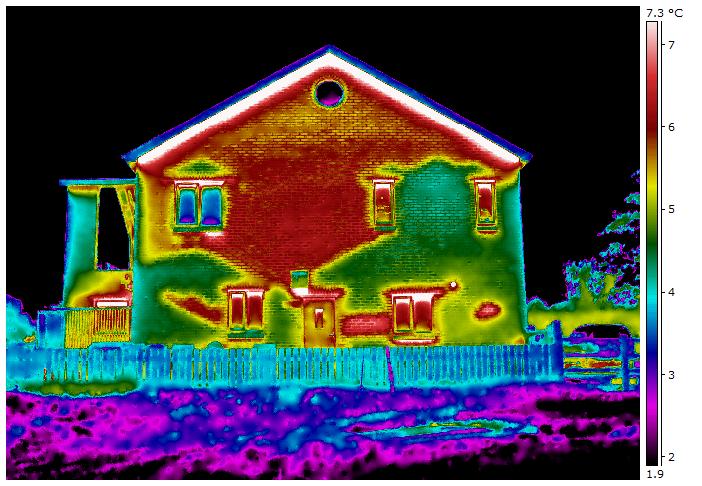With a new 2035 goal of cutting emissions by 78% compared to 1990 levels, the Government has accelerated the pace at which it seeks to achieve net zero carbon by 2050. Fundamental to realising these targets is an overhaul of the energy performance of the UK’s existing housing stock. Stewart Little, CEO of IRT Surveys, explains how data-driven insights are helping local authorities and housing associations make smarter retrofit decisions.
The fast-tracked drive towards achieving net zero means there is increased demand to improve the energy efficiency of Britain’s housing stock. With the built environment being responsible for 30% of total UK greenhouse gas emissions[1], its decarbonisation continues to be a priority for the construction industry.
This is particularly true of existing properties. Indeed, 80% of the homes people will occupy in 2050 are already built and predictions suggest these will account for 95% of future built environment emissions[2]. The decarbonisation of these properties is, therefore, critical to achieving net zero. For the nation’s considerable assortment of four million social housing properties, in particular — which, in 2020, accounted for around 16.7% of all households — reducing emissions to net zero at pace is a must.
A road map to ambitious refurbishment
To make progress towards the 2035 and 2050 targets, particularly for an undertaking of this scale, major infrastructure decisions must be made and implemented sooner rather than later. Yet, with retrofit work for social housing properties expected to cost £104bn by 2050[3], the construction industry can ill afford to make the wrong decisions on their pathway to net zero. For this reason a comprehensive plan is essential to support local authorities, housing associations and construction companies to address the fabric of the built environment and deliver the ambitious transformation of the housing stock.
While the road map to a net zero housing stock has a clear starting point and destination, its success is reliant on stakeholders concurring on the best and most effective route to get there. Today, as in so many other industries, the solution can be found in the use of data that can supply industry professionals with the critical insights needed to facilitate smarter decision making.
The value of data insights
Before commencing a large scale retrofit or refurbishment project aimed at achieving net zero, the first challenge will be to identify energy efficiency and emissions issues in existing housing stock. The use of Building Information Modelling (BIM) for building envelope thermal performance analysis and energy efficiency evaluation enables stakeholders to discover the issues, understand the investment needed to remedy them, and find out whether it will deliver a Return on Investment (ROI).
Construction professionals can enrich Building Information Modelling (BIM) with sensor data, thermal images and the associated data. When cutting edge thermal imaging technology is paired with BIM, for example, the resulting data can be deployed to even greater effect.
The accurate visual insights into the condition of buildings provided by infrared thermal imaging can reveal a wide range of energy efficiency issues, such as previously undetected half-filled cavities or empty cavities, insulation defects and waterproofing weaknesses, as well as other problems. It is also a solution that doesn’t damage the building fabric during the survey, thus preventing more expensive problems while delivering significant value.
As inaccurate data can impede the large scale and speedy deployment of energy-saving solutions, equipping professionals with hard data from thermal imaging enables decisions to be made based on facts and free from the bias and preconception often found in traditional building surveys.

The DORIC project — a case study
The Domestic Optimised Retrofit Innovation Concept (DORIC) is a £5.2m project, backed by the Department for Business Energy & Strategy (BEIS) £50m investment fund, aimed at improving the energy performance of 100 properties. The scheme, led by IRT Surveys (IRT), in a consortium that includes Aberdeen City Council, SMS PLC and Robertson Construction, is a key illustration of how new technology, cloud-based applications and data work together to bring success.
DORIC commenced with IRT Surveys analysing Aberdeen County Council’s entire portfolio of 22,000 homes to identify suitable properties to retrofit. This was achieved by uploading authority held housing data to IRT’s DREam online platform where it was augmented, merged and filtered to determine the most appropriate programme of redevelopment. The platform also allowed the consortium to align data with investment criteria, e.g., The ECO3 Funding Scheme, to identify suitable funding opportunities.
Through analysis, the 22,000 homes were assessed against a range of criteria to identify which would be best suited for retrofit. This included looking at whether properties could take PV structurally and have external wall insulation, as well as factors such as asbestos, orientation, fuel poverty, kitchens, bathrooms, structural integrity and condition.
Crucially, from a financial perspective, the assessment also factored in whether funding would be welcome and if the timing matched up with the authority’s investment programme. As a result, DREam’s critical insights filtered the entire portfolio down to just 400 suitable properties.
From the 400 properties identified, 150 householders agreed to take part in the project. IRT surveyors, in partnership with SMS and Robertson, then developed and carried out a comprehensive survey process that captured the necessary insights needed to drive retrofitting works for the homes. This was carried out as a one-time assessment in order to minimise any disruption for residents.
Wider benefits achieved
Thermal imaging, together with comprehensive, 10-archetype, internal surveys (including airtightness, EPCs, retrofit assessment, retrofit coordination and gSkin U-value thermocouples) enabled the efficacy of the project deliverables to be attained and provided a simple, engaging, visual audit trail. At the same time, Switchee smart meters and sensors were installed that further improve decarbonisation by providing occupants with rapid feedback and two-way communication.
As a result, Aberdeen County Council obtained maximum insights and value and was also able to use the same model and intuitive, polygonal mapping tool to facilitate the retrofitting of the next 100 homes.
For further information about IRT Surveys visit: http://irtsurveys.co.uk/
[1] https://www.greenfinanceinstitute.co.uk/wp-content/uploads/2020/06/Financing-energy-efficient-buildings-the-path-to-retrofit-at-scale.pdf
[2] https://www.citb.co.uk/about-citb/news-events-and-blogs/net-zero-350-000-new-construction-roles-to-be-created-by-2028/
[3] https://www.insidehousing.co.uk/insight/insight/how-will-the-housing-sector-finance-decarbonisation-of-its-stock-69925









